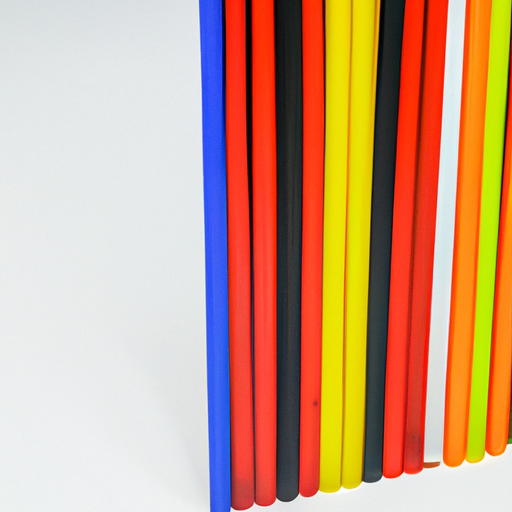
Mainstream Double-Wall Heat Shrinkable Tube Product Series Parameters
I. Introduction
In the world of electrical insulation and protection, double-wall heat shrinkable tubes have emerged as a vital component across various industries. These specialized tubes are designed to provide robust insulation, sealing, and protection for wires and connectors, making them indispensable in applications ranging from automotive to aerospace. This blog post aims to delve into the parameters of mainstream double-wall heat shrinkable tubes, exploring their composition, performance characteristics, applications, and selection criteria. By the end, readers will have a comprehensive understanding of these products and their significance in modern technology.
II. Understanding Double-Wall Heat Shrinkable Tubes
A. Composition and Structure
Double-wall heat shrinkable tubes consist of two distinct layers: an inner adhesive layer and an outer heat-shrinkable layer. The inner layer is typically made from a thermoplastic adhesive that melts when heat is applied, creating a strong bond with the substrate. The outer layer, made from materials like polyolefin or PVC, shrinks when heated, providing a snug fit around the components it covers.
B. Manufacturing Process
The manufacturing of double-wall heat shrinkable tubes involves several key processes. The primary materials used include polyolefin, which offers excellent flexibility and chemical resistance, and PVC, known for its durability. The production techniques often involve extrusion, where the materials are heated and formed into tubes, followed by cross-linking to enhance their thermal and mechanical properties.
III. Key Parameters of Double-Wall Heat Shrinkable Tubes
A. Dimensions
The dimensions of double-wall heat shrinkable tubes are critical for their effective application. They come in various diameter ranges, both before and after shrinking, allowing for versatility in covering different wire sizes. Length options also vary, catering to specific project requirements.
B. Shrink Ratio
The shrink ratio is a crucial parameter that determines how much the tube will shrink when heat is applied. Common shrink ratios include 2:1 and 3:1, meaning the tube can shrink to half or a third of its original diameter. Understanding the implications of these ratios is essential for ensuring a proper fit and effective sealing in applications.
C. Temperature Resistance
Double-wall heat shrinkable tubes are designed to withstand a range of temperatures. The operating temperature range typically spans from -55°C to 125°C, with some products capable of enduring short-term exposure to even higher temperatures. This temperature resistance is vital for applications in harsh environments.
D. Adhesive Properties
The adhesive properties of double-wall heat shrinkable tubes are paramount for their performance. Various types of adhesives are used, each offering different bonding capabilities with substrates such as metals, plastics, and rubber. The choice of adhesive can significantly impact the effectiveness of the seal and the longevity of the application.
IV. Performance Characteristics
A. Electrical Insulation Properties
One of the primary functions of double-wall heat shrinkable tubes is to provide electrical insulation. They exhibit excellent dielectric strength, ensuring that they can withstand high voltages without breaking down. Additionally, their insulation resistance is crucial for preventing electrical leakage and ensuring safety in electrical systems.
B. Mechanical Properties
The mechanical properties of these tubes, including tensile strength and elongation at break, are essential for their durability. High tensile strength ensures that the tubes can withstand mechanical stress without tearing, while good elongation allows them to stretch and conform to irregular shapes without compromising their integrity.
C. Chemical Resistance
In many applications, double-wall heat shrinkable tubes are exposed to various chemicals, oils, and solvents. Their chemical resistance is a critical performance characteristic, ensuring that they do not degrade or lose their protective properties when exposed to harsh substances. Additionally, considerations such as UV resistance and moisture protection are vital for outdoor applications.
V. Applications of Double-Wall Heat Shrinkable Tubes
A. Electrical and Electronic Industries
In the electrical and electronic sectors, double-wall heat shrinkable tubes are widely used for cable insulation and protection. They provide a reliable barrier against moisture, dust, and mechanical damage, ensuring the longevity and safety of electrical connections. Additionally, they are used for connector sealing, preventing corrosion and ensuring optimal performance.
B. Automotive Applications
The automotive industry relies heavily on double-wall heat shrinkable tubes for wire harnessing and component protection. These tubes help organize and protect wiring systems, ensuring that they remain functional even in the face of vibrations, temperature fluctuations, and exposure to chemicals.
C. Aerospace and Military Uses
In aerospace and military applications, double-wall heat shrinkable tubes are essential for protecting sensitive components in harsh environments. They must comply with stringent industry standards, providing reliable insulation and protection in extreme conditions, such as high altitudes and varying temperatures.
D. Other Industries
Beyond electrical and automotive applications, double-wall heat shrinkable tubes find use in various other industries, including medical devices and consumer electronics. In medical applications, they provide insulation and protection for sensitive wiring, while in consumer electronics, they help ensure the durability and reliability of devices.
VI. Selection Criteria for Double-Wall Heat Shrinkable Tubes
A. Application-Specific Requirements
When selecting double-wall heat shrinkable tubes, it is crucial to consider application-specific requirements. Factors such as environmental conditions, including temperature and exposure to chemicals, play a significant role in determining the appropriate tube type.
B. Compatibility with Materials
Compatibility with the materials being used is another critical consideration. Different types of wires and connectors may require specific adhesive properties or surface preparation to ensure a strong bond and effective sealing.
C. Cost vs. Performance Analysis
Finally, a cost vs. performance analysis is essential for making informed decisions. While it may be tempting to choose the most affordable option, it is vital to consider the long-term performance and reliability of the tubes to avoid costly failures in the future.
VII. Installation and Usage Guidelines
A. Preparation Before Installation
Before installing double-wall heat shrinkable tubes, proper preparation is essential. This includes cleaning the surfaces to remove any contaminants and ensuring that the right size tube is selected for the application.
B. Installation Techniques
Installation techniques vary, but common methods include using heat guns or ovens to apply heat evenly. Safety precautions should always be taken during installation to prevent burns or damage to the components.
C. Post-Installation Inspection
After installation, a thorough inspection is necessary to ensure proper shrinkage and bonding. Visual checks can help identify any issues, and testing for electrical integrity is crucial to confirm that the installation meets safety standards.
VIII. Conclusion
Double-wall heat shrinkable tubes are a vital component in modern electrical and electronic applications, providing insulation, protection, and sealing capabilities. Understanding their parameters, performance characteristics, and applications is essential for making informed decisions in selecting the right product for specific needs. As technology continues to evolve, we can expect advancements in materials and manufacturing processes, further enhancing the performance and versatility of these essential components. By staying informed and making educated choices, users can ensure the reliability and longevity of their applications.
IX. References
1. Industry standards and guidelines from organizations such as the International Electrotechnical Commission (IEC) and the American National Standards Institute (ANSI).
2. Manufacturer specifications from leading producers of heat shrinkable tubes.
3. Academic and technical literature on heat shrinkable tubes, including research papers and industry publications.
This comprehensive overview of mainstream double-wall heat shrinkable tubes serves as a valuable resource for professionals and enthusiasts alike, ensuring a deeper understanding of this critical product series.



